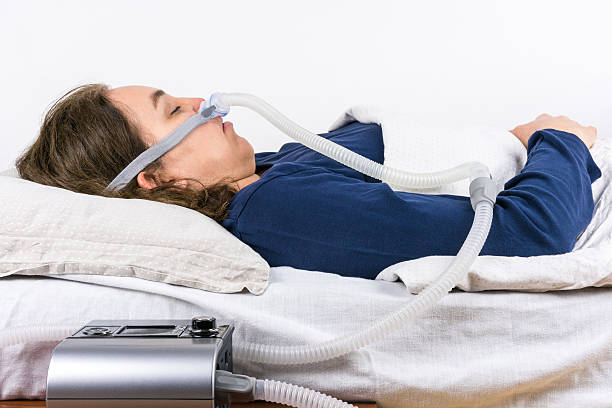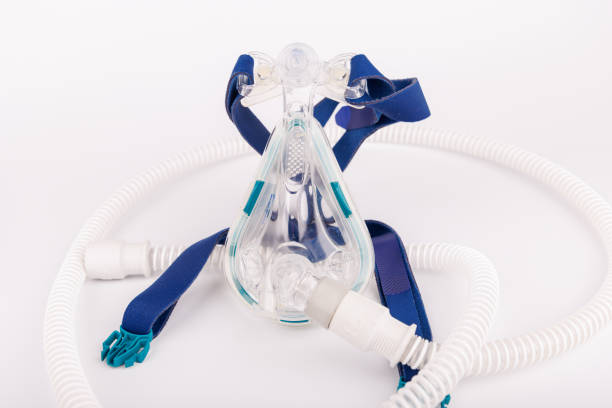Categories
Latest blog
Introduction
The CPAP mask is one of the most important components of continuous positive airway pressure (CPAP) therapy, widely used for patients with sleep apnea and other breathing difficulties. With global demand increasing and search interest reaching tens of thousands each month, hospitals, clinics, and medical distributors must understand the different mask types, features, and procurement considerations.
A CPAP mask is a medical device used in conjunction with a Continuous Positive Airway Pressure (CPAP) machine. It serves as the interface between the patient and the ventilatory support system, ensuring that pressurized air is delivered effectively into the airway. This continuous airflow prevents airway collapse and supports breathing, making CPAP therapy a gold standard in managing sleep apnea and certain respiratory conditions.
For hospitals, clinics, and distributors, CPAP masks are not simply accessories—they are critical components that directly impact patient comfort, compliance, and treatment success. Poorly fitting or low-quality masks can lead to air leaks, patient discomfort, and ultimately, therapy failure.
Key Takeaway for Buyers:
When sourcing CPAP masks, procurement teams should prioritize fit, comfort, durability, and compatibility with standard CPAP machines. These factors determine not only patient outcomes but also long-term demand for reliable supply.
Different patients have different needs, which is why multiple CPAP mask types are available. For procurement specialists, understanding these categories is essential to stocking the right mix for diverse patient populations.
Cover only the nose.
Lightweight and generally well-tolerated by most patients.
Ideal for patients who breathe through their nose and prefer less facial coverage.
Buyer Note: Hospitals should stock these in multiple sizes to fit varying facial structures.

Use small cushions that seal at the nostrils.
Minimal contact design, offering superior comfort.
Suitable for patients with claustrophobia or those who wear glasses.
Buyer Note: These are highly popular for long-term users, especially in home-care or outpatient programs.

Cover both the nose and mouth.
Necessary for patients who breathe through their mouth or experience nasal obstruction.
Provide a more secure seal at higher pressure settings.
Buyer Note: Bulk supply is crucial for emergency departments and inpatient wards, where patient needs are unpredictable.
Combine elements of nasal and full-face masks.
Designed for maximum patient comfort and versatility.
Increasingly popular due to market trend shifts toward customization.
Buyer Note: Offering hybrid masks gives procurement teams an edge in meeting the growing demand for patient-specific solutions.
When procurement teams purchase CPAP masks in bulk, the decision is rarely based on price alone. The right mask can dramatically improve patient comfort, therapy adherence, and long-term cost efficiency. Below are the critical features to evaluate:
A well-fitting CPAP mask ensures that pressurized air is delivered effectively without leakage. Poor seals not only compromise therapy outcomes but also lead to frequent patient complaints.
Look for masks with multiple size options (small, medium, large).
Adjustable headgear improves adaptability across patient groups.
Buyer Insight: Stocking a variety of sizes reduces returns and ensures readiness for diverse patient demographics.
Cushions provide the contact point between the mask and the patient’s skin. The material used directly influences comfort, durability, and hygiene.
Silicone cushions: Most common, durable, and easy to clean.
Gel cushions: Offer a softer feel, reducing pressure points.
Foam cushions: Lightweight and comfortable, but often disposable.
Buyer Insight: Hospitals often prefer reusable silicone masks, while home-care programs may demand more disposable options.
Patients wear CPAP masks for long hours, often overnight. Poorly designed headgear can lead to discomfort, slippage, or skin irritation.
Adjustable straps accommodate different head shapes.
Magnetic clips or Velcro fasteners allow quick application and removal.
Buyer Insight: Easy-to-use fastening systems are especially valuable in acute care settings.
A CPAP mask must be universally compatible with standard CPAP machines and tubing to ensure supply chain efficiency. Procurement teams should confirm compatibility before committing to large-scale purchases.
Disposable masks: Lower upfront costs, suitable for short-term hospital stays or isolation units.
Reusable masks: Higher durability, better long-term value, and more eco-friendly.
Buyer Insight: A mixed inventory helps hospitals balance infection control protocols with budget efficiency.
Market trends show increasing demand for lightweight, noise-reducing, and minimal-contact designs. These innovations not only improve patient satisfaction but also reduce therapy dropout rates.
Buyer Insight: Distributors that offer newer, patient-focused designs gain a competitive edge in B2B tenders.
The demand for CPAP masks continues to rise as sleep apnea and respiratory conditions become more widely diagnosed. For wholesalers and procurement teams, success depends on choosing suppliers and products that balance cost, compliance, and patient outcomes. Below are the most important considerations:
Medical buyers should ensure that every CPAP mask meets international regulatory standards such as:
ISO 13485 (medical device quality management)
CE Marking (Europe)
FDA Approval (United States)
Why it matters: Certified products not only meet safety requirements but also strengthen trust during hospital audits and inspections.
While CPAP mask price is always a factor, buyers must evaluate long-term value rather than short-term savings.
Reusable masks reduce replacement frequency.
Disposable masks may be cheaper but increase recurring costs.
Procurement Tip: Run a cost-per-use analysis when comparing suppliers, rather than relying on upfront price alone.
Uninterrupted supply is crucial in healthcare procurement. Hospitals and clinics cannot afford shortages.
Verify supplier production capacity and inventory systems.
Ask about delivery lead times and emergency stock guarantees.
Buyer Insight: Wholesalers that maintain strong supplier relationships gain an edge in competitive tendering.
Healthcare providers are increasingly demanding customizable CPAP masks—whether in terms of packaging, private labeling, or specialized sizing.
Custom packaging helps pharmacies differentiate their offerings.
Hospitals may request masks pre-packaged with tubing or filters.
Procurement Tip: Aligning with suppliers who offer flexible customization is a strategic way to future-proof procurement.
Beyond product delivery, strong after-sales services add value:
Instructional guides for patient education.
Training resources for clinical staff on fitting and usage.
Warranty policies for reusable masks.
Buyer Insight: Suppliers who provide ongoing support often help reduce patient non-compliance, strengthening the hospital’s therapy outcomes.
The global demand for CPAP masks continues to rise as awareness of sleep apnea, chronic respiratory conditions, and hospital-based respiratory therapy grows. For procurement teams in hospitals, clinics, and pharmacies, sourcing the right masks is no longer just a matter of availability—it is a strategic decision that affects both patient outcomes and operational efficiency.
Key trends shaping the market include:
Growing demand for customization (private labeling, flexible packaging, patient-specific sizing).
Shift toward reusable CPAP masks as a cost-effective and eco-friendly option.
Regulatory emphasis on certified products that meet ISO, FDA, and CE standards.
Technology integration in newer mask models, improving comfort and adherence.
For wholesalers and buyers, this means one thing: partnering with the right supplier is critical. A supplier who can guarantee reliable inventory, compliance certifications, customization flexibility, and competitive pricing will help healthcare organizations stay ahead in a rapidly evolving market.
The choice of a CPAP mask supplier directly impacts patient satisfaction, treatment success, and procurement efficiency. Hospitals and pharmacies should prioritize suppliers who combine certified quality, strong logistics, and adaptable solutions. By doing so, buyers not only meet today’s demand but also prepare for tomorrow’s growth.